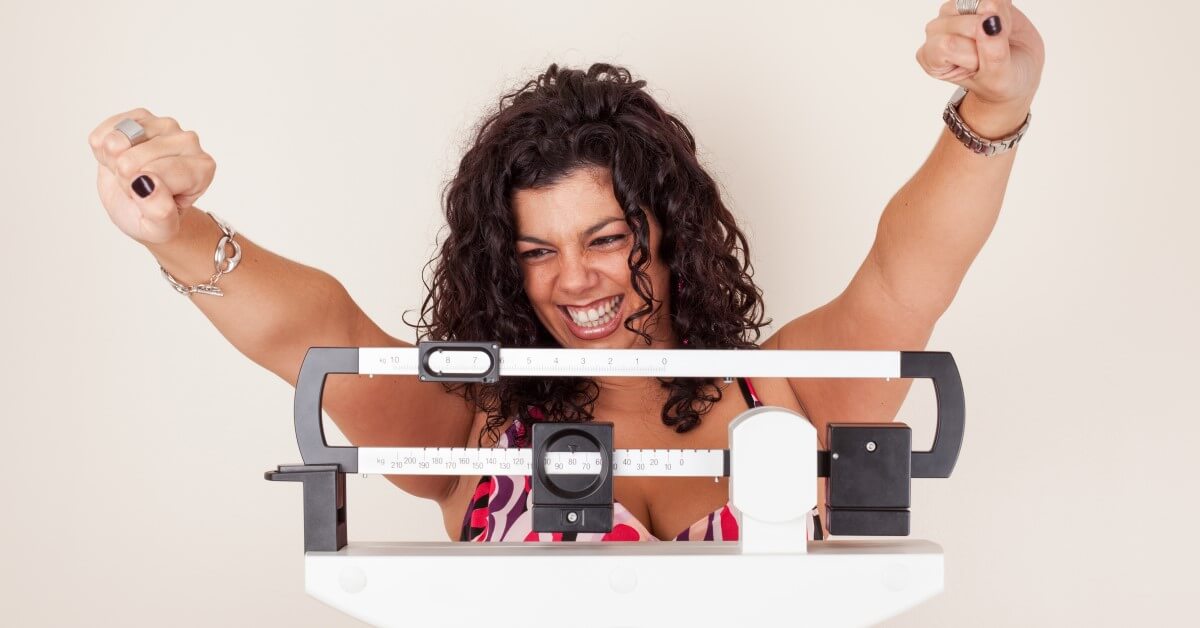
Overview
Being overweight or obese has well-documented health and even social drawbacks.
Obesity is a significant factor in developing cardiovascular disease, diabetes, osteoarthritis, depression, and certain forms of cancer,[1] yet rates of obesity have been rising steadily over the past five decades in the U.S. and other developed countries.[1]
The good news is that, for the most part, the adverse health effects of carrying too much body fat are reversible with weight loss.[2]
The bad news is that losing weight requires a lifestyle overhaul, which is not easy.
Let’s face it; change is challenging. Humans love the familiar. It’s safe and comfortable, and we will always gravitate towards that feeling rather than head into the unknown or something we dread, such as denying ourselves our favorite foods and couch time.
Unscrupulous marketing powers have been peddling miracle cures for obesity for as long as it has been recognized that it’s unhealthy. They promise easy, effortless weight loss with a pill, tea, tincture, and whatever else can be packaged and sold.
So, is there anything that can be done to lose excess weight that doesn’t require constant vigilance and works?
More good news: the answer is yes.
Eight Ways to Shed Pounds Without Trying
Before diving into this list, it’s essential to remember that if you are very overweight, nothing will replace a lifestyle change that includes an emphasis on your diet and increasing physical activity levels. That being said, these tips can certainly help you get started or even be all that you need to start the weight loss process.
- Slow Down and Chew Well
A study on determining the effects of thoroughly chewing food found that overweight participants chewed their food faster than their leaner counterparts.[3] Conversely, increasing the number of chews per bite from an average of 15 to 40 resulted in a 12 percent decrease in the amount of food ingested – not to mention a much better chance of the body using the ingested nutrients more efficiently.[3]
The takeaway here is simple: Slow down. Savor the food you are eating and chew it well.
- Get Your Protein
Most of us are familiar with the bodybuilder trope of constantly needing ever-increasing amounts of protein to build more muscle. Still, the undeniable truth is that we all need it and should be focused on it as our primary macronutrient. Some compelling reasons exist for this, especially if your goal is weight loss.
Protein gives you a better feeling of fullness than fats or carbohydrates and raises your metabolism. Hence, you burn more calories, and yes – it helps maintain or even increase muscle tone, which, in turn, burns more calories.[4]
Eggs, lean meats, chicken breast, fish, seafood, and Greek yogurt are excellent protein sources. For non-animal-sourced protein, go for tofu, tempeh, edamame, or quinoa. And don’t forget to chew them slowly and well.
- Keep Unhealthy Food Out of the House (or Out of Sight)
Studies have shown that obese people had unhealthy food within more easily detectable locations in their homes than those at a healthy weight.[5] Although this may sound simplistic, the simple and small changes add up to success.
Keep unhealthy foods stored away from eyesight and healthy foods easily visible as much as possible. Better yet – don’t keep unhealthy food in the home in the first place.
- If You Do Eat Unhealthily, Use Small Plates
Ok, sometimes we give in to cravings. Does this spell the end of the road for our weight loss? It doesn’t have to. But we can do something to dampen the negative effects.
We underestimate portion sizes when placed on a large dinner plate. However, when placed on smaller plates, our senses seem to interpret this as a satisfactory portion, and therefore we eat less.[6]
If you are trying to lose weight, ultimately, what you eat and how much you eat takes on more importance; however, using smaller dishes to eat from will likely mitigate a setback.
- Drink Water
Water should be your drink of choice if you are trying to lose weight. After all, we are mostly water, so staying hydrated helps with some of our most fundamental functions.
But it goes beyond that for those who want to shed some pounds with minimal effort: studies have shown that people who drink water regularly consume fewer calories than people who don’t.[7]
Replacing sugary sodas or fruit juices with water makes an even more significant impact on weight management. If you’re not a water drinker, replace some sugary stuff with water.
However, one trick you can do right away is to drink 17 oz. of water about half an hour before you plan to have a meal, causing a fullness effect that allows for less food to be consumed during that meal.[8]
- Eat Foods higher in fiber
Here is another trick in our quest to simplify weight loss. It has been proven that a higher fiber intake is associated with lower body weight.[9] That is because fiber bonds to food, slowing down digestion, which provides a fuller feeling longer.
Choose more whole grains, beans, lentils, and berries. If you want to keep the carbs down, go for avocados, broccoli, or flax seed.
- Focus on food
Eating is one of life’s pure and natural pleasures. Your meal should be a highlight. ‘Distracted eating’ when one is not present while having a meal can cause you to lose track of how much you eat while paying attention to it can decrease how much is consumed.[10]
Therefore, one of the simplest methods to start the process of weight loss/management is to ditch the T.V., tablet, or smartphone during meals and have some one-on-one time with your food.
- Don’t Forget About Sleep
Sleep is one of those things that most people don’t think about when it comes to weight loss. However, poor sleep is linked to obesity and weight gain, while a healthy sleep-wake cycle can help you maintain a healthy weight.[11] Poor sleep can have the effect of disrupting the secretion of hormones that are involved in appetite control, like leptin and ghrelin.[11]
So, get 7-9 hours of sleep every night for another easy way to manage weight. If you have trouble sleeping for over three months, see your doctor to rule out any underlying conditions.
The Takeaway
Losing weight takes work. It requires will, time, and effort because a lifestyle shift has to happen to do it right.
However, losing weight doesn’t have to be a massively difficult undertaking either. If you have only a few pounds you want to get rid of or need to lose weight but aren’t quite in the frame of mind for an all-out program, try these eight tips. They are all relatively simple to add to your day, and before you know it, you may have to think about shopping for smaller clothes.
References:
- Pi-Sunyer X. (2009). The medical risks of obesity. Postgraduate medicine, 121(6), 21–33. https://doi.org/10.3810/pgm.2009.11.2074
- Haase, C. L., Lopes, S., Olsen, A. H., Satylganova, A., Schnecke, V., & McEwan, P. (2021). Weight loss and risk reduction of obesity-related outcomes in 0.5 million people: evidence from a U.K. primary care database. International journal of obesity (2005), 45(6), 1249–1258. https://doi.org/10.1038/s41366-021-00788-4
- Li, J., Zhang, N., Hu, L., Li, Z., Li, R., Li, C., & Wang, S. (2011). Improvement in chewing activity reduces energy intake in one meal and modulates plasma gut hormone concentrations in obese and lean young Chinese men. The American journal of clinical nutrition, 94(3), 709–716. https://doi.org/10.3945/ajcn.111.015164
- Paddon-Jones, D., Westman, E., Mattes, R. D., Wolfe, R. R., Astrup, A., & Westerterp-Plantenga, M. (2008). Protein, weight management, and satiety. The American journal of clinical nutrition, 87(5), 1558S–1561S. https://doi.org/10.1093/ajcn/87.5.1558S
- Emery, C. F., Olson, K. L., Lee, V. S., Habash, D. L., Nasar, J. L., & Bodine, A. (2015). Home environment and psychosocial predictors of obesity status among community-residing men and women. International journal of obesity (2005), 39(9), 1401–1407. https://doi.org/10.1038/ijo.2015.70
- McClain, A. D., van den Bos, W., Matheson, D., Desai, M., McClure, S. M., & Robinson, T. N. (2014). Visual illusions and plate design: the effects of plate rim widths and rim coloring on perceived food portion size. International journal of obesity (2005), 38(5), 657–662. https://doi.org/10.1038/ijo.2013.169
- Popkin, B. M., Barclay, D. V., & Nielsen, S. J. (2005). Water and food consumption patterns of U.S. adults from 1999 to 2001. Obesity research, 13(12), 2146–2152. https://doi.org/10.1038/oby.2005.266
- Dennis, E. A., Dengo, A. L., Comber, D. L., Flack, K. D., Savla, J., Davy, K. P., & Davy, B. M. (2010). Water consumption increases weight loss during a hypocaloric diet intervention in middle-aged and older adults. Obesity (Silver Spring, Md.), 18(2), 300–307. https://doi.org/10.1038/oby.2009.235
- Clark, M. J., & Slavin, J. L. (2013). The effect of fiber on satiety and food intake: a systematic review. Journal of the American College of Nutrition, 32(3), 200–211. https://doi.org/10.1080/07315724.2013.791194
- Robinson, E., Aveyard, P., Daley, A., Jolly, K., Lewis, A., Lycett, D., & Higgs, S. (2013). Eating attentively: a systematic review and meta-analysis of the effect of food intake memory and awareness on eating. The American journal of clinical nutrition, 97(4), 728–742. https://doi.org/10.3945/ajcn.112.045245
- Taheri, S., Lin, L., Austin, D., Young, T., & Mignot, E. (2004). Short sleep duration is associated with reduced leptin, elevated ghrelin, and increased body mass index. PLoS medicine, 1(3), e62. https://doi.org/10.1371/journal.pmed.0010062


